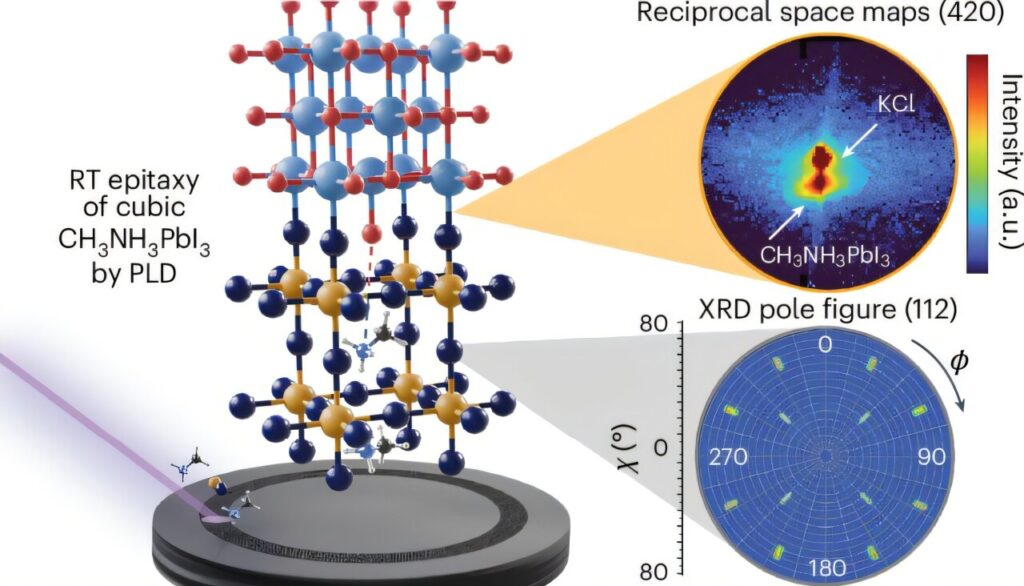Scientists at the University of Twente have developed a way to create highly ordered semiconductor material at room temperature. This UT research was published today in Nature Synthesis. This breakthrough could make optoelectronics more efficient by controlling the crystal structure and reducing the number of defects at the nanoscale.
The team focused on a material called metal halide perovskites, known for its ability to absorb sunlight efficiently and its use in devices like LEDs, semiconductors and solar cells. Making these materials with one single orientation (or in other words with highly ordered grains) has been a challenge. Up to date, this has mainly been used in the polycrystalline form.
In other words, in a non-ordered fashion. This can limit their use in applications, such as LEDs, where high order and low density of defects are needed. Normally, these highly ordered semiconductors require high processing temperatures. But in this new process, the UT researchers skip the heat and build up the material layer by layer using a pulsed laser.
Getting the structure right
“Halide perovskites are already remarkable semiconductors and are, for example, used in solar cells,” says Junia Solomon Sathiaraj, Ph.D. student at the Inorganic Material Science research group.
“But usually we have little control in how exactly the material grows,” she explains. This means the molecules in the materials have many different orientations and structures. “In theory, if we improve the quality of the material, we also improve its efficiency.”
“It’s all about getting the structure right,” says Monica Morales-Masis (who leads the work under the ERC StG CREATE project). A perfectly ordered structure in the material is essential for creating devices that are efficient and reliable. The resulting material is stable for over 300 days and offers great potential for applications like solar panels and advanced electronics. This innovation not only helps us in creating greener, more cost-effective technologies but also paves the way for new scientific discoveries in materials research.


